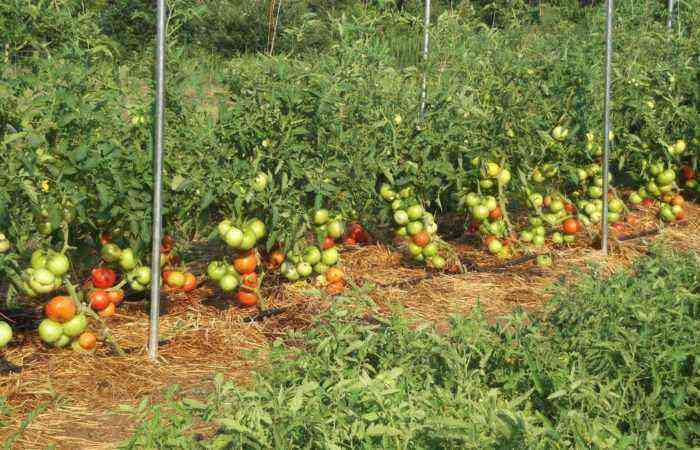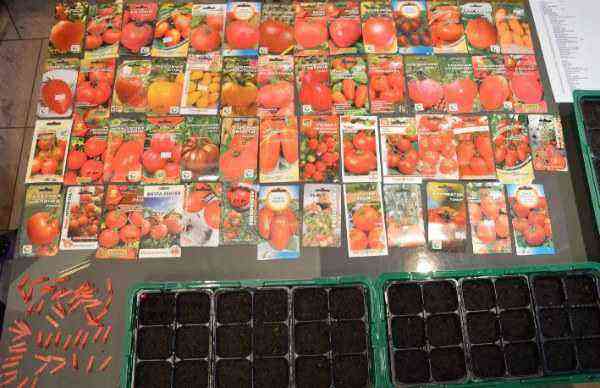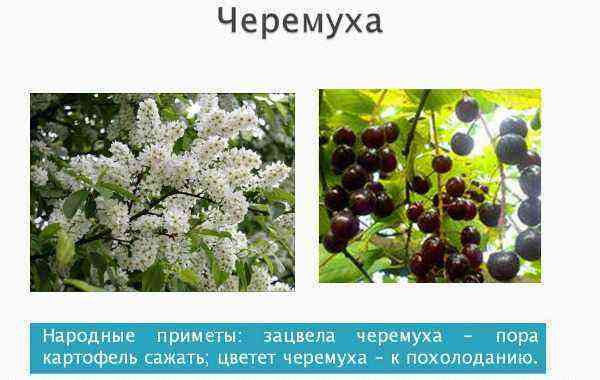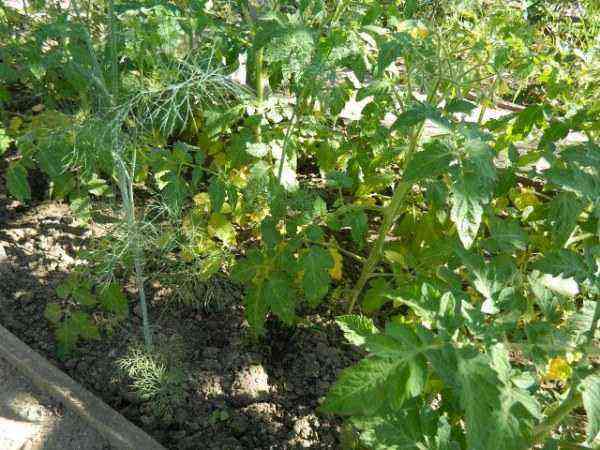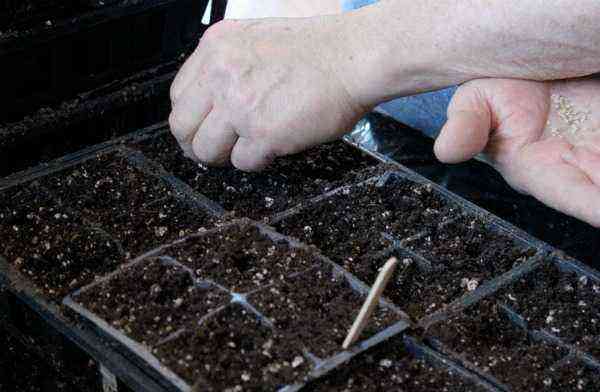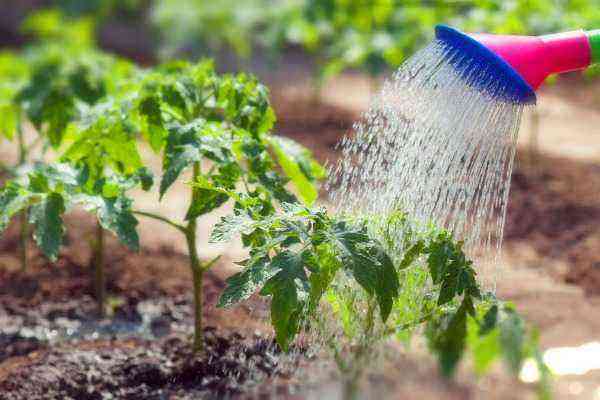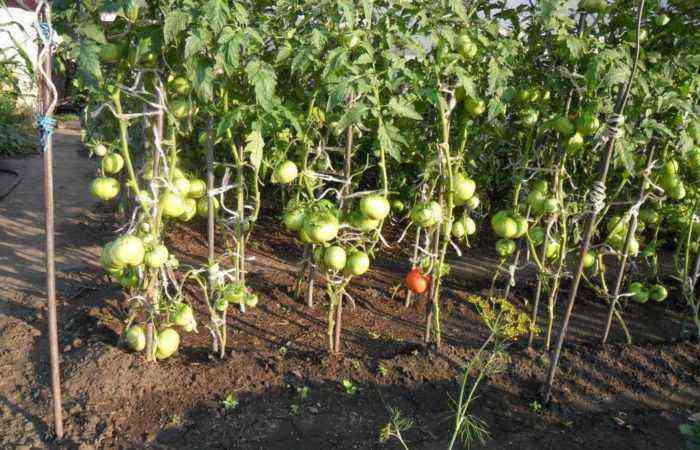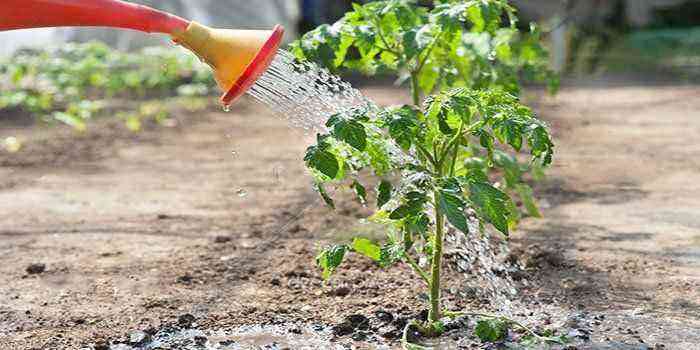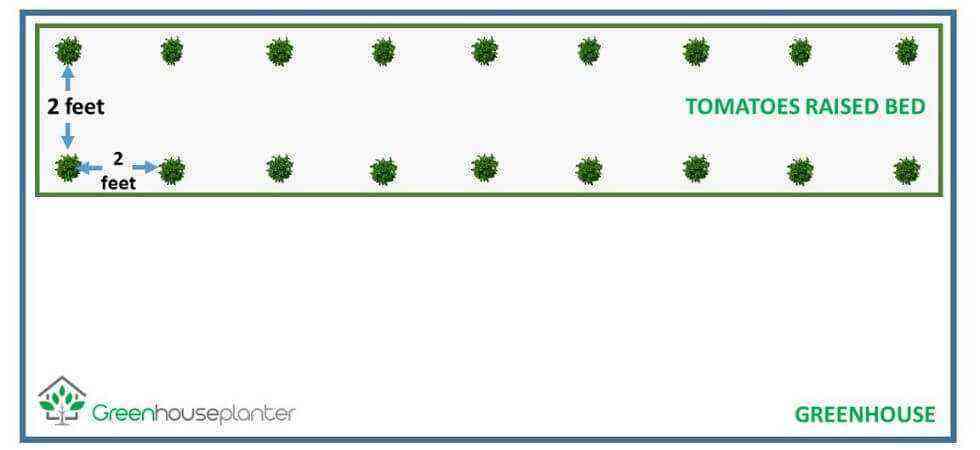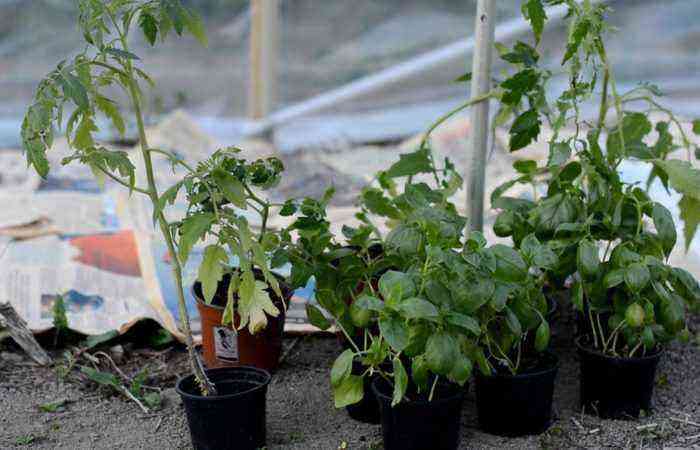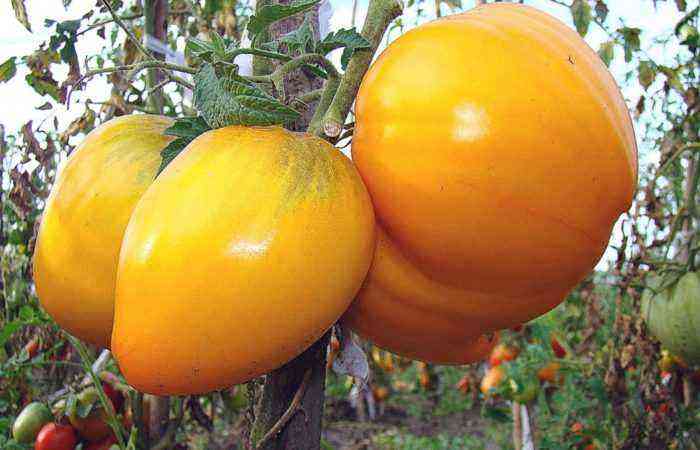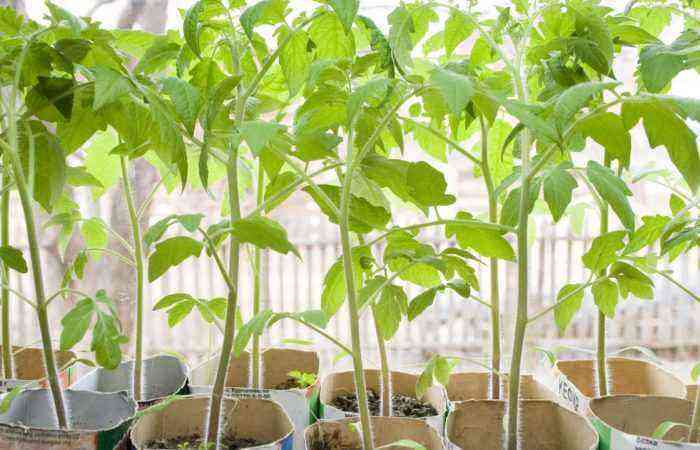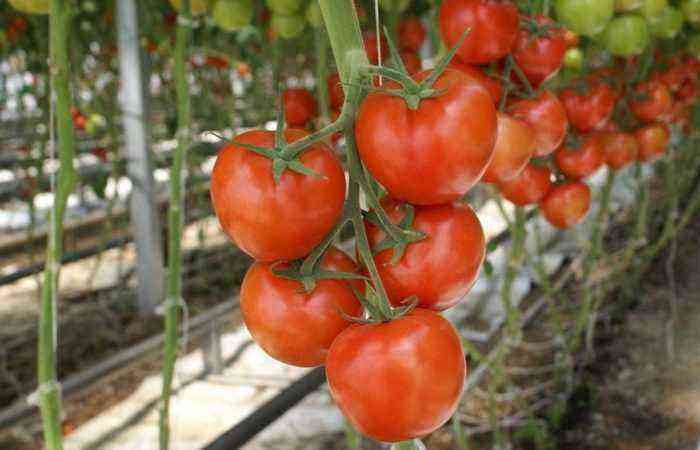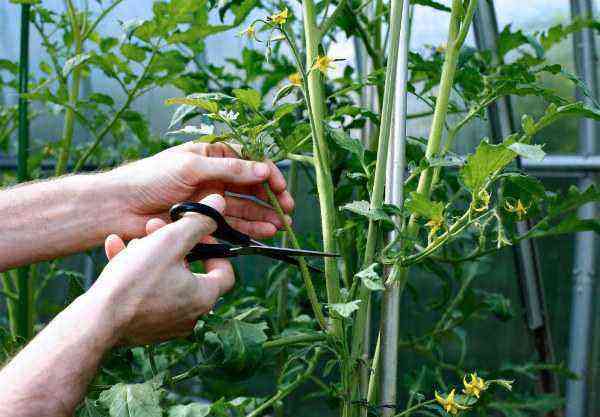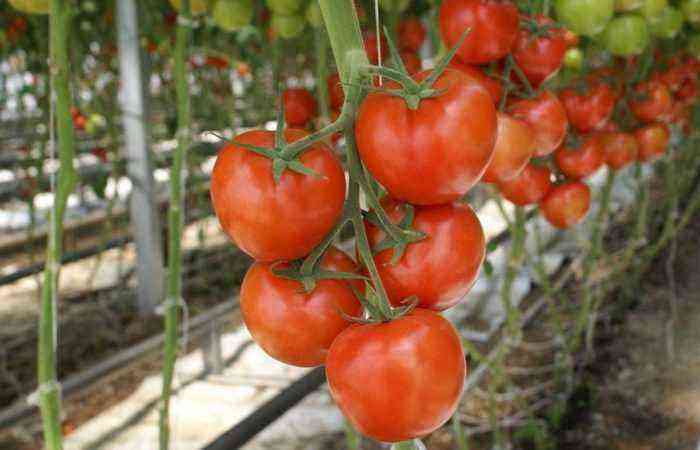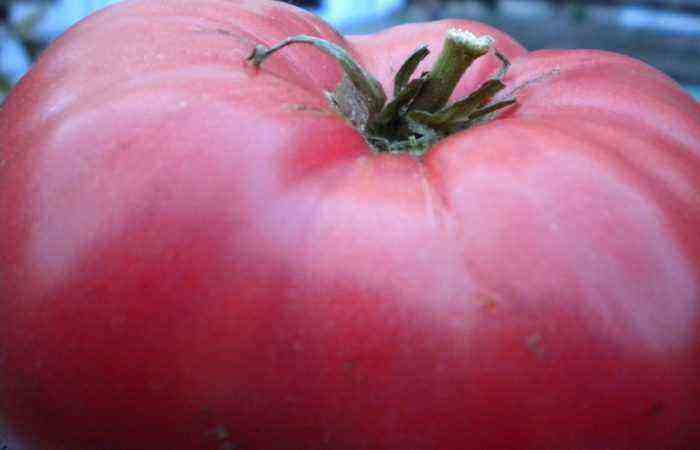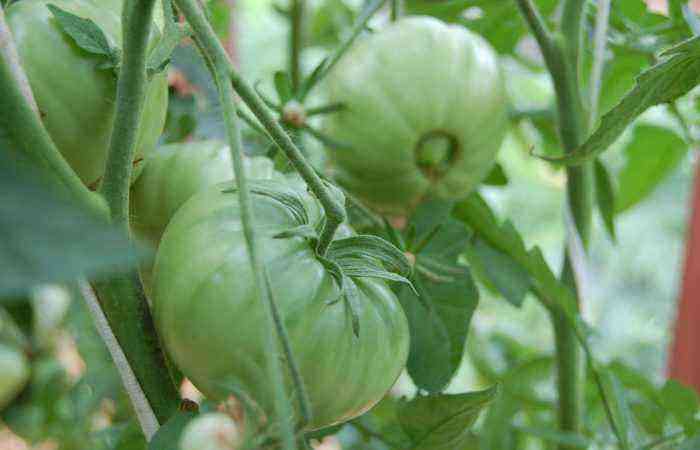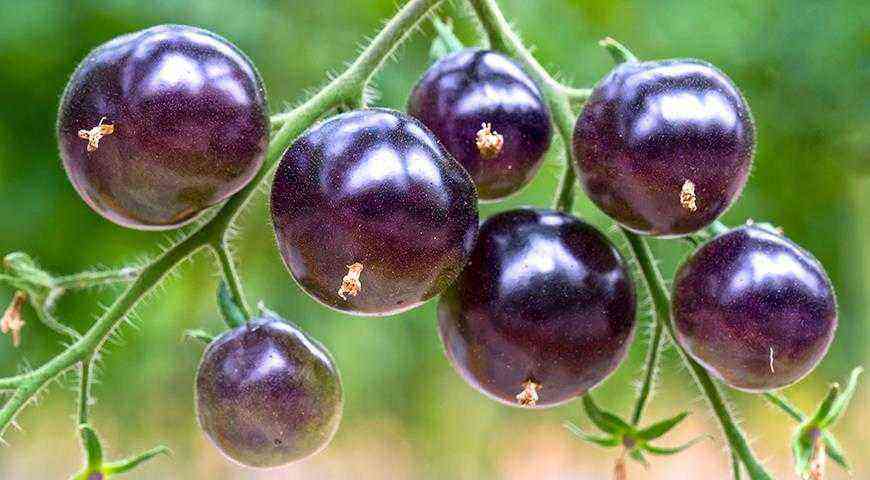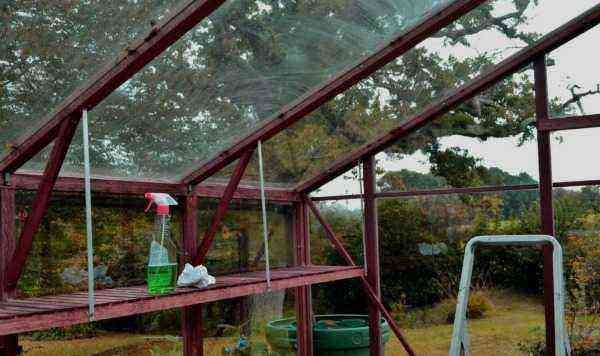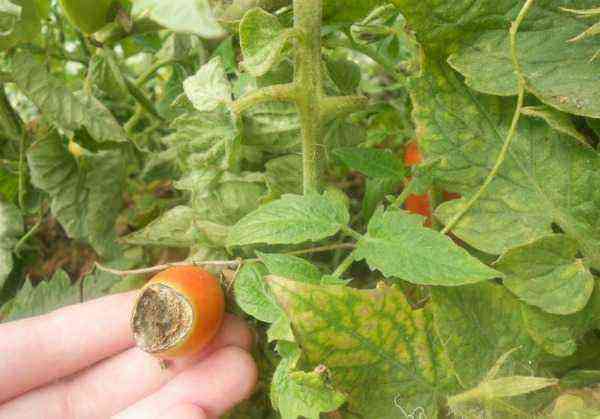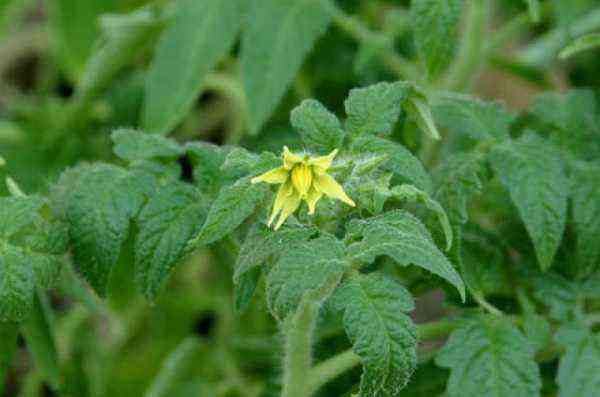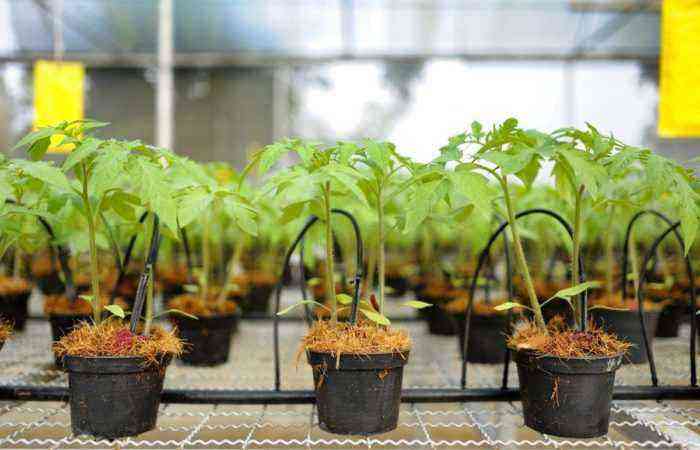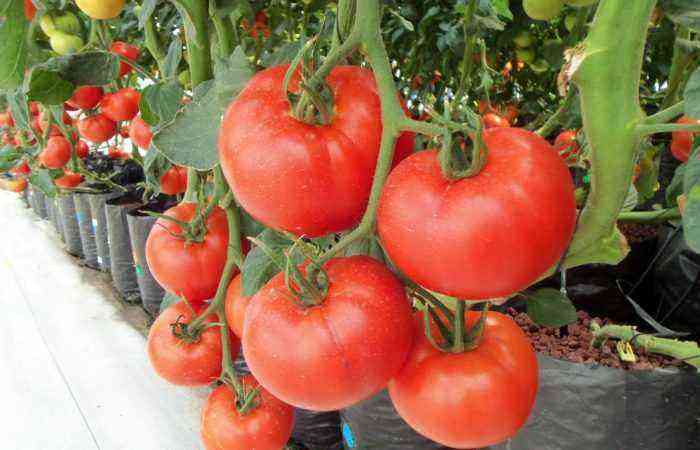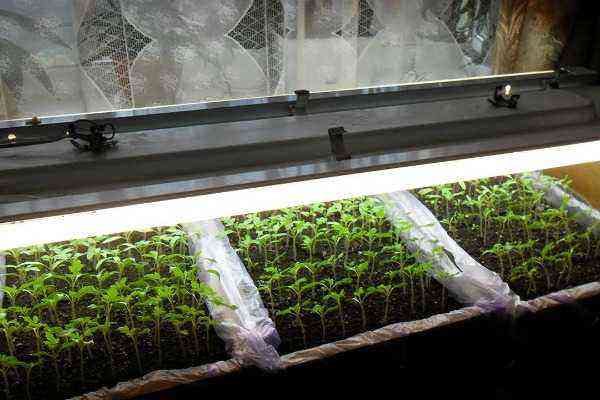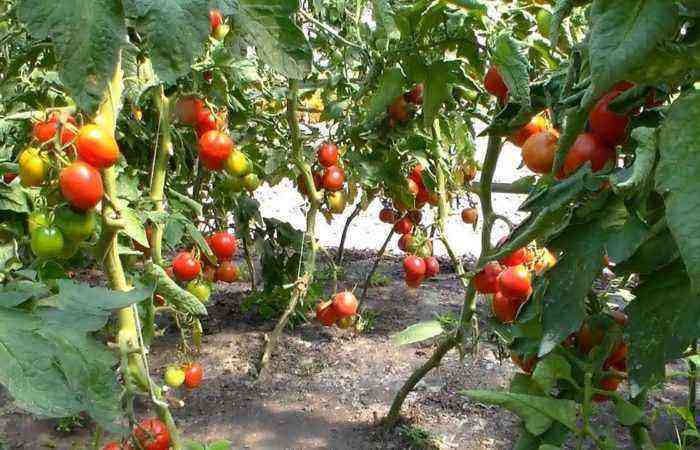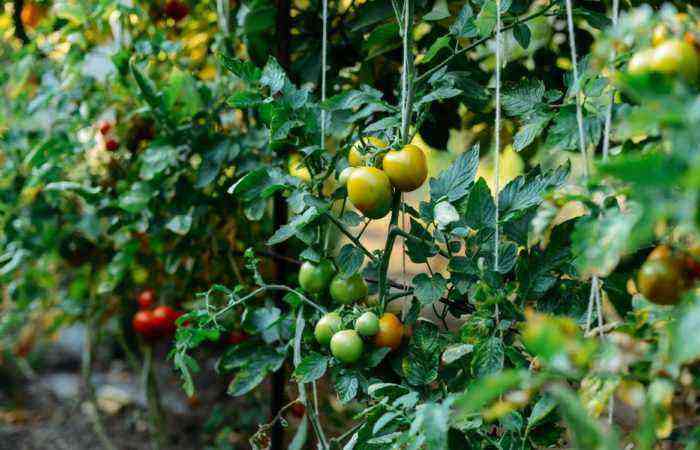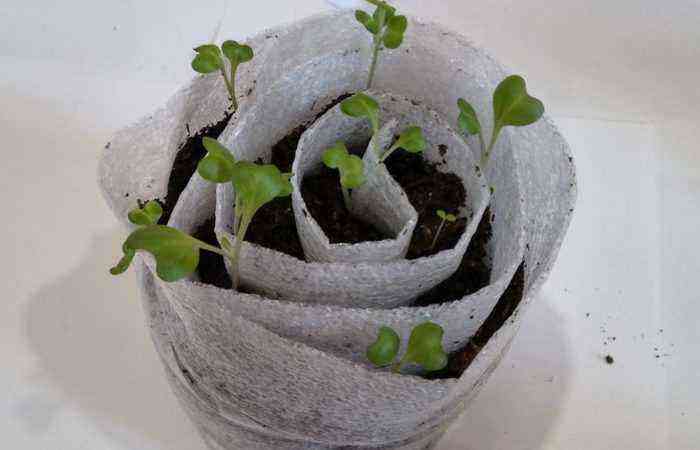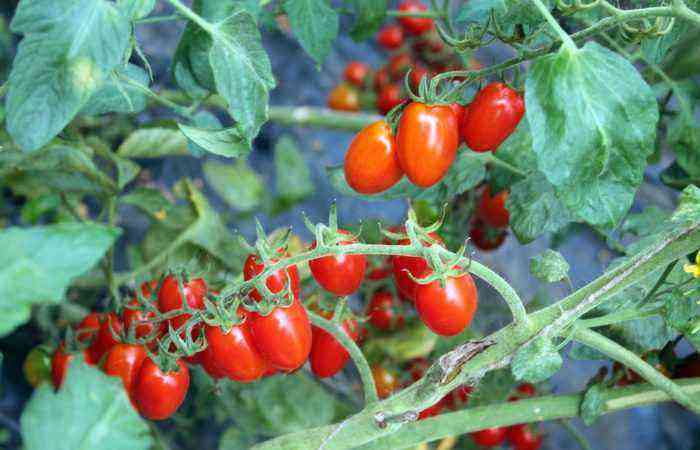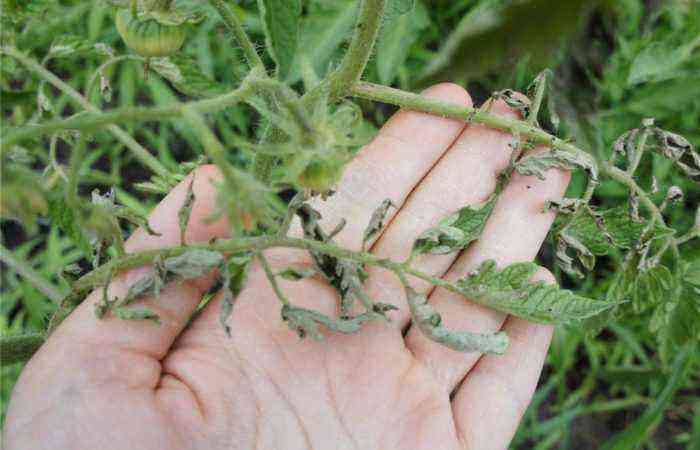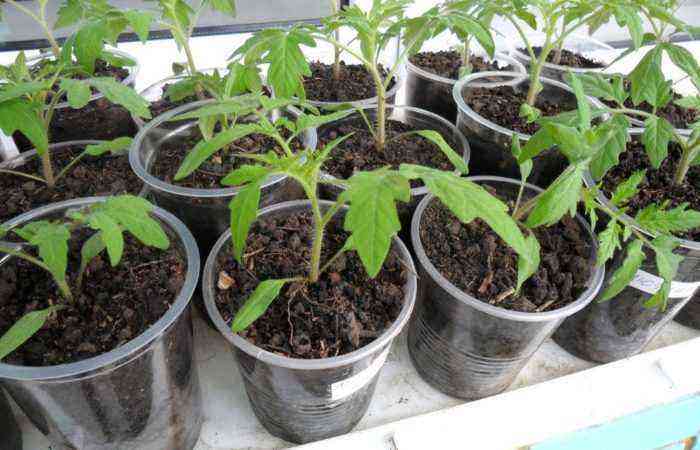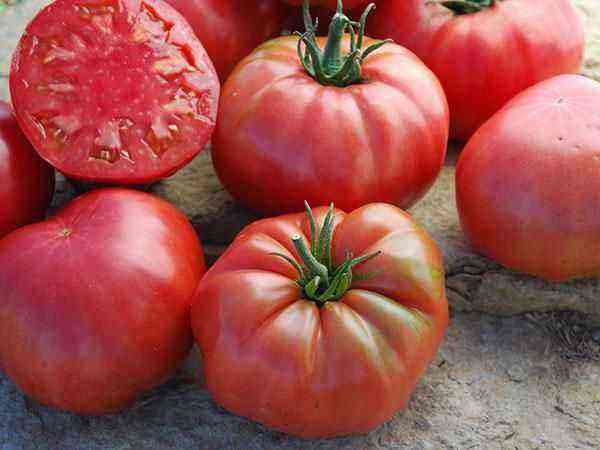Which of the experienced vegetable growers has not come across a situation where a few damp, cool days completely change the views of the tomato crop. Just yesterday, strong, green plants with many ovaries turn into a pile of brown-gray garbage with rotten, moldy fruits. Even removed, apparently quite healthy fruits, are immediately covered with brown spots. To prevent this from happening, you need to know as much as possible about the disease, and learn how to deal with it.
What is late blight?
The name of the disease comes from the Greek words: phyto (plant) and fluorosis – destructive. Gardeners call it phytophthora. The causative agent of the disease, the fungus Phytophthora infestans, affects various organs of nightshade crops: leaves, stem, fruits. Potatoes and tomatoes are especially affected by this insidious disease.
Signs of the disease
It is necessary to constantly monitor the condition of the plants so as not to miss the first signs of the disease. Infection can take place gradually: at the beginning, grayish-brown single spots form on the leaf blades and stem. From the underside of the leaves appears white, with a downy coating. Under favorable conditions for the fungus, the number and size of spots increases rapidly.
How it spreads
The spores of the fungus are very tenacious and overwinter safely both in the soil and in plant debris, on the walls of greenhouses, tools and inventory. The spores are very mobile and can be carried by the wind over considerable distances. Infection occurs through the pores of the epidermis of the leaf blade, into which fungal spores enter with water. It is very difficult to fight the disease that got inside.
Conditions for the development of the disease
- Timing of illness.
Phytophthora fungus spores can be stored in the soil for a long time, waiting for favorable conditions, which often develop by mid-summer or during frequent rains. Late blight provokes the spread of sudden changes in temperature during the day, when the difference between day and night is up to 10 ° C or more. Such conditions cause dew and fog to form, which increases the humidity of the air and the plants themselves.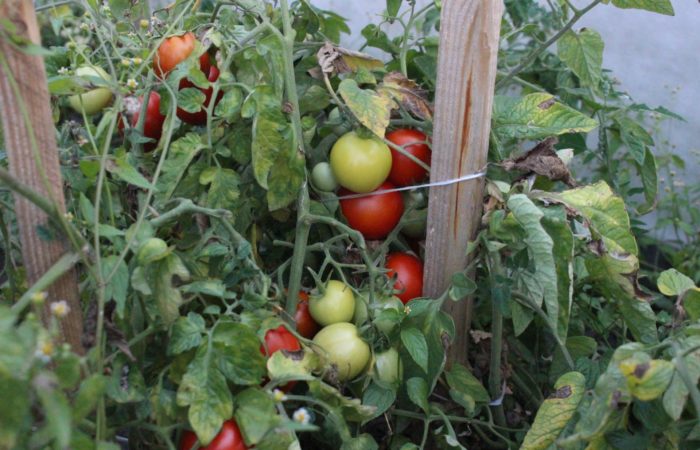
- Temperature.
Migration of fungal spores is activated already at temperatures above 10°C, and in wet weather, plants begin to be colonized by fungal spores. When exposed for 2 hours in hot, dry air, the spores of the fungus die.
- Humidity.
Since water is needed to penetrate the pores of the plant, the most favorable conditions for the spread of the disease occur in wet weather, when the air humidity rises to 75% or more for at least two days.
Means for combating late blight of tomatoes
Antifungal drugs for treatment
- Gamair.
It is a microbiological preparation for the suppression of fungi and bacteria that contribute to the development of diseases. Its principle of action is based on the resistance of another fungus – saprotrophic Trichoderma harziannum. It is used for soil treatment, plants and seed disinfection, in accordance with the manufacturer’s instructions.
- Phytosporin.
The same applies to the group of microbiological preparations. It contains spores of beneficial fungi that protect tomatoes from the spread of late blight. It not only fights diseases, but also strengthens the immune system of the plant. Phytosporin is used at different stages of plant development and before sowing:
- pre-sowing tillage – 1,5-2 tbsp. l. for 10 liters of water;
- dressing seeds, seedling roots (soak in solution for 2-3 hours) – 3-4 drops per 200 ml of water;
- during the growing season with a frequency of 10-14 days, in rainy weather 1-2 times a week, spraying with a solution – 3 tsp. for 10 liters of water.
For better coverage and adhesion, it is recommended to add a little soap to the solution.
- Hom.
The drug belongs to the fungicides of contact action, that is, it does not cure, but protects against damage, therefore it is used for preventive purposes. The main active ingredient is copper oxychloride. Hom covers the tissues of the plant with a protective film, practically without penetrating inside. To achieve the effect of treatment, it is necessary to start before the onset of signs of the disease.
The drug is safe for humans, as it does not accumulate in tissues and is washed off with water.
For processing, a freshly prepared solution is used – 40 g of the drug per 10 liters of water. The first treatment is carried out before flowering. The frequency of application is 10-14 days. It is better to spray between the flowering brushes. The number of treatments for the growing season 4-5. The consumption of the drug is 1 liter per 10 square meters. m. Can be used with some fertilizers and other fungicides, except for those with an alkaline reaction.
- Polyhom.
The fungicidal drug of complex action contains polycarbacin and copper oxychloride in a percentage of 60:40, which significantly enhances its effect. At the same time, it fights brown spotting.
In addition, it has a deterrent effect against the larvae of the Colorado potato beetle. It is non-toxic to bees and bumblebees and is compatible with other pesticides.
The solution is prepared from 30 g of the drug per 10 liters of water, used per 100 square meters. m. area. The first treatment is carried out when signs appear or when fruits are set, the next – after 10-15 days. Finish processing 20 days before the start of harvesting.
Other fungicides to combat late blight:
- Quadris is a contact drug for prophylaxis (0,04 – 0,06% solution).
- Ridomil Gold – for the prevention and treatment of the disease (in accordance with the manufacturer’s instructions).
- Bravo is a contact drug for prevention.
Attention! All treatments should be stopped 20 days before the harvest of a ripe crop.
Folk methods for protection against phytophthora in tomatoes
The more year after year the phytophthora fungus destroys the tomato crop, the more persistently gardeners try to resist it and, by trial and error, find new folk ways to deal with it.
- Infusion of garlic and onions.
The destructive power of onions and garlic, which kills viruses and fungal diseases, has been known since ancient times. In the fight against late blight, an aqueous infusion of garlic is used, which kills the spores of the late blight fungus. For 10 liters of water you will need:
- crushed cloves, shoots – 200-300 g insist during the day;
- potassium permanganate – 2 g.

- Kefir.
A prophylactic agent that is being used even when growing seedlings. Processing is carried out with a frequency of 10-14 days before flowering and 7-10 days during the rest of the growing season. To prepare the solution, 2 liter of kefir and 1 liters of water are fermented for 10 days.
- Iodine.
The solution uses the antimicrobial and antifungal properties of iodine. In combination with skim milk, a good safe product is obtained – a milky iodine solution that can be sprayed on plants:
- milk – 1 l;
- water – 10 l;
- iodine – 20 drops.
- Copper wire.
Microdoses of copper have a stimulating effect on plant respiration and the formation of chlorophyll, increase plant resistance and immunity, and increase oxidation. All the most effective preparations for combating phytophthora contain copper. Vegetable growers “extract” copper using copper wire, which is pre-calcined, cut into pieces 3-4 cm long. A strengthened tomato stem is pierced with a piece of wire at a height of 10 cm above the ground, bending the ends down.
- Ash.
It is used not only for feeding, but also in the fight against harmful fungi. The solution is used before flowering and during the formation of the first ovaries. To prepare for 3 days, insist, stirring, 3-4 liters of ash in 10 liters of water. Then the solution is settled, diluted with water to 30 liters, 30-40 g of laundry or liquid soap are added there.
- Salt.
Salt solution (1 glass of salt per 10 liters of water) helps to create a thin film that closes the stomata from getting fungal spores into them. It is a preventive measure.
Features of processing tomatoes: how to spray plants
- In a greenhouse.
The main measures should be of a preventive nature: disinfection of structures, soil, tools, microclimate regulation. For spraying plants, it is necessary to use natural agents and contact microbiological preparations, to minimize the use of aggressive chemicals. In the closed space of the greenhouse, especially actively harmful elements accumulate in fruits and worsen their qualitative composition.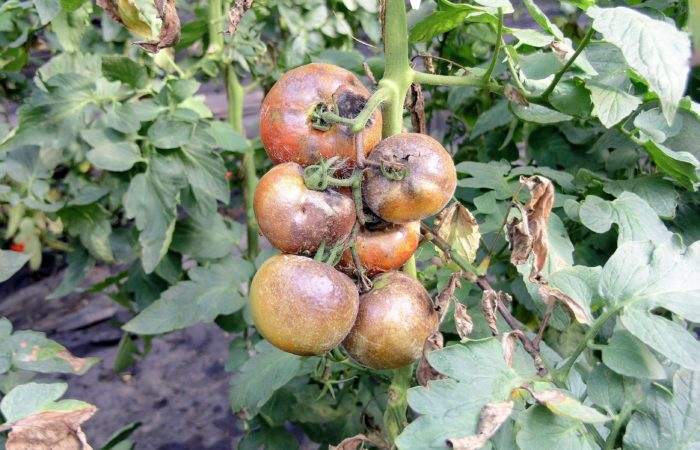
- In open ground.
For the development of phytophthora, nature itself creates the conditions here. This usually happens by the beginning of July. It is impossible to influence this factor, so plant protection should be started from the second half of June:
- Two treatments with systemic drugs (Ridomil Gold, Ordan) or contact-systemic (Oxyx). Interval 7-14 days.
- Subsequent treatments with contact preparations (Penkotseb, Hom) with an interval of 7-10 days.
Cultivation of land contaminated with phytophthora
- Phytosporin.
Fitosporin can be used to disinfect the soil. It is entered in two ways:
- dry powder is scattered on the surface of the soil, watered and dug up.
- water the soil with a solution (1-2 tablespoons per 10 liters of water).
Dosage rates should be applied in accordance with the manufacturer’s recommendations.
- Trichodermin.
Sold in the form of a liquid or peat substrate containing spores and mycelium of the Trichoderma lignorum fungus and its metabolic products, which inhibit the development of the phytophthora fungus and eat it. For trichodermin to work, conditions must be created. The fungus does not work on bare, dry ground, it must be applied under mulch or under digging the soil before planting. The temperature background for the development of the fungus is from 4 to 30°C.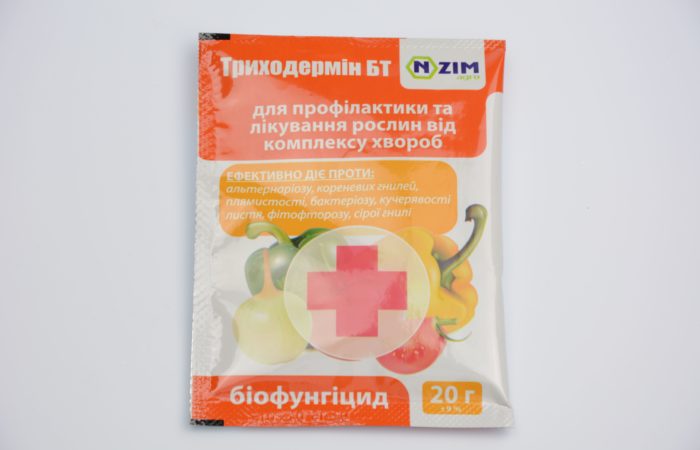
- other fungicides.
The treatment can be carried out with other similar preparations: Extrasol, Glyocladin, Baktofit Alirin-B, Gamair, Baikal EM. If treatment with biological preparations is not enough, chemicals are used: Bordeaux liquid (3% solution), Oksihom (2%), copper oxychloride.
Carefully! Chemical preparations must be used in moderation, as they destroy not only harmful elements, but also beneficial microflora.
Phytophthora resistant tomato varieties
For greenhouses, you can use varieties of different ripening periods:
- indeterminate – De Barao, Octopus, La-La-Fa, Mikado, Cio-Cio-San, Evpator, Virtuoso;
- determinant: Grandee, Persimmon, Oak, Orange miracle, Dwarf, Perseus, Budenovka.
For open ground, early ripening resistant varieties are more suitable, which ripen before the onset of adverse weather conditions: Salting Miracle, Lights of Moscow, Orange Giant, Luch, Marmande, Little Prince.
From the video you can find out how you can deal with late blight and how to prevent infection.
To prevent disease means to save the crop
It is very difficult to treat late blight, so it is very important to take measures that prevent the development of a harmful fungus:
- Avoid thickening of plantings, remove lower leaves in a timely manner to improve ventilation, as well as leaves and fruits with signs of disease.
- Apply mulching to maintain soil moisture without increasing air humidity.
- Do not allow the neighborhood of other crops that are distributors of phytophthora, especially potatoes.
- Observe crop rotation.
- Timely carry out preventive spraying and apply chemicals as needed.
- Provide intensive ventilation and low humidity in the greenhouse.
- Immediately destroy plant waste affected by the disease, do not use nightshade crops in compost heaps.
Valuable tips
- Is it possible to take seeds from diseased tomatoes?
To collect seeds, you need to choose the best specimens. This is the basic rule of seed production. If it becomes necessary to collect tomato seeds from a bush damaged by late blight, this is possible, given that the spores of the fungus require living tissue to survive. Seeds are thoroughly dried, and disinfected before planting.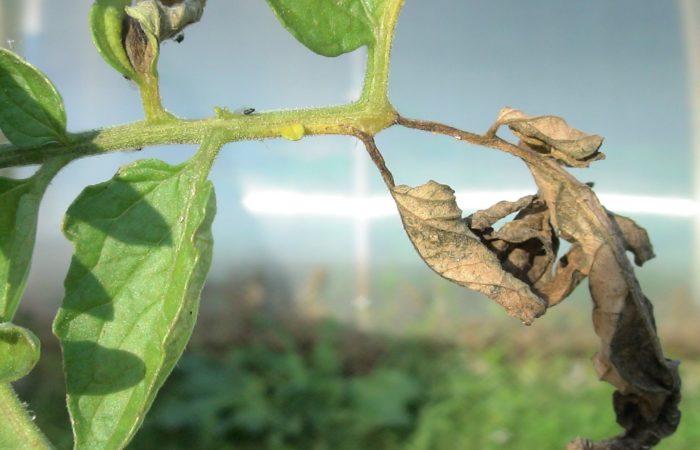
- How to store infected tomatoes?
In the event that preventive measures have not yielded results and the disease has begun to spread, it is almost impossible to stop the process. It is urgent to remove healthy fruits. To save them, you can:
- immerse for 5-10 minutes in a solution of one of the copper-containing preparations in doses used for spraying;
- with a sharp movement for 1-2 seconds, immerse in boiling water.
After processing, the tomatoes are dried and stored for some time.
- Can infected tomatoes be eaten?
For canning, healthy fruits should be used so that during storage they do not provoke the development of microorganisms harmful to health. Eating fresh or after heat treatment of fruits with damaged areas removed is allowed.
Timely implementation of preventive measures and the identification of foci of late blight in tomatoes, the competent use of drugs, will prevent the development of the disease and maintain a high-quality, safe crop.
